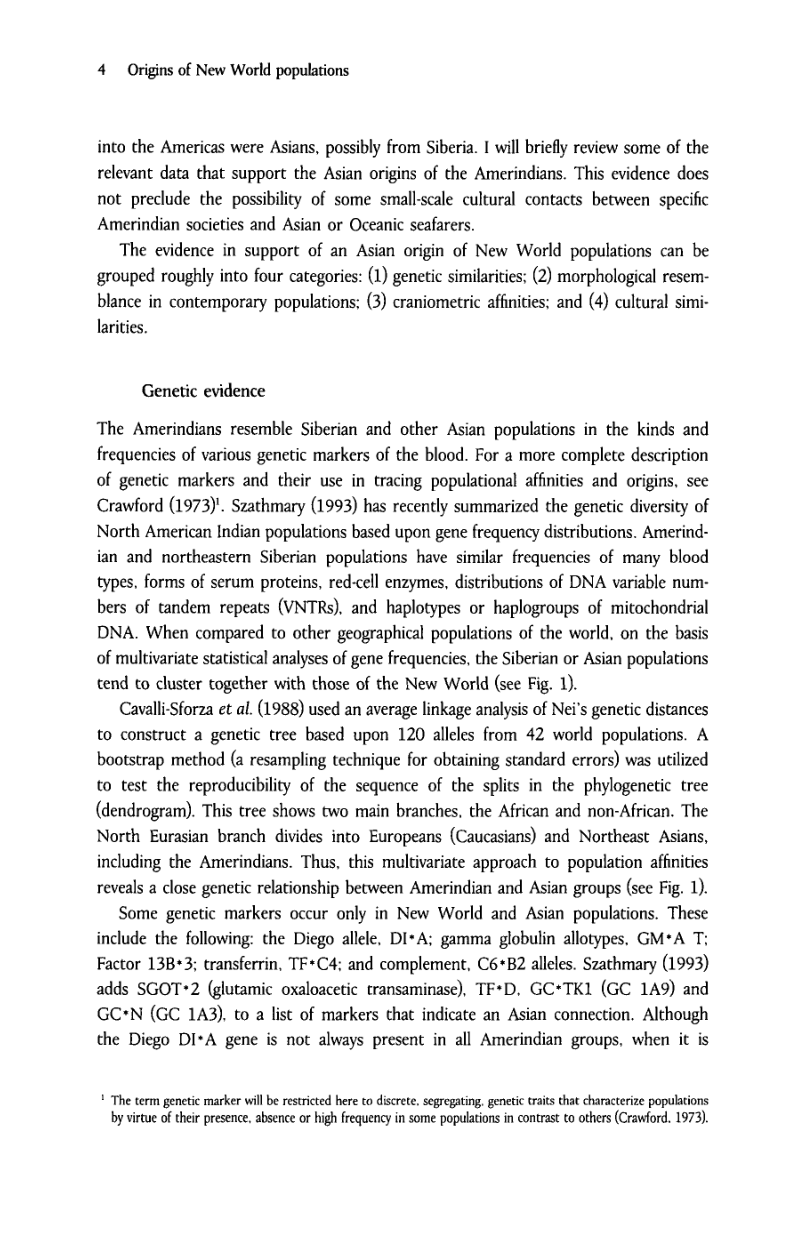Michael H. Crawford reviews literature of the 1990s pointing to Asian origins for American Indians.
- Type
- Book
- Source
- Michael H. Crawford Non-LDS
- Hearsay
- Direct
- Reference
Michael H. Crawford, The Origins of Native Americans: Evidence from Anthropological Genetics (Cambridge: Cambridge University Press, 1998), 4–7
- Scribe/Publisher
- Cambridge University Press
- People
- Michael H. Crawford
- Audience
- Reading Public
- Transcription
The Amerindians resemble Siberian and other Asian populations in the kinds and frequencies of various genetic markers of the blood. For a more complete description of genetic markers and their use in tracing populational affinities and origins, see Crawford (1973). Szathmary (1993) has recently summarized the genetic diversity of North American Indian populations based upon gene frequency distributions. Amerindian and northeastern Siberian populations have similar frequencies of many blood types, forms of serum proteins, red-cell enzymes, distributions of DNA variable numbers of tandem repeats (VNTRs), and haplotypes or haplogroups of mitochondrial DNA. When compared to other geographical populations of the world, on the basis of multivariate statistical analyses of gene frequencies, the Siberian or Asian populations tend to cluster together with those of the New World (see Fig. l)
Cavalli-Sforza et al. (1988) used an average linkage analysis of Nei's genetic distances to construct a genetic tree based upon 120 alleles from 42 world populations. A bootstrap method (a resampling technique for obtaining standard errors) was utilized to test the reproducibility of the sequence of the splits in the phylogenetic tree (dendrogram). This tree shows two main branches, the African and non-African. The North Eurasian branch divides into Europeans (Caucasians) and Northeast Asians, including the Amerindians. Thus, this multivariate approach to population affinities reveals a close genetic relationship between Amerindian and Asian groups (see Fig. l).
. . .
- Citations in Mormonr Qnas
The B. H. Roberts Foundation is not owned by, operated by, or affiliated with the Church of Jesus Christ of Latter-day Saints.

